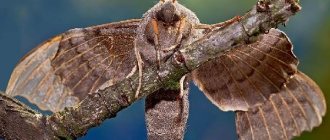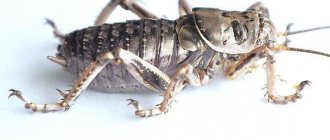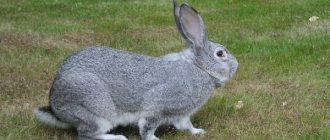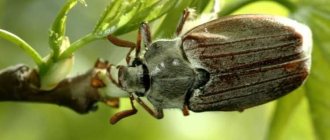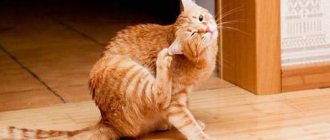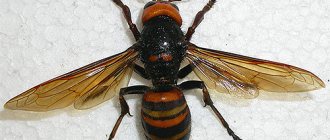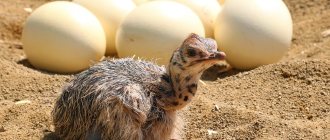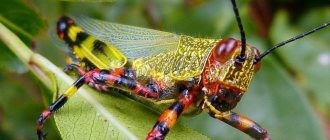Today, chinchillas have firmly taken a leading position in the ranking of pets. A little earlier, people were interested in them only as a source of unusually beautiful fur. In principle, they are still studying and improving their quality characteristics. A significant improvement in the livestock is planned in the near future. This is facilitated by the fairly strong popularity of black chinchilla fur for tailoring.
Among all the color variations of these exotic rodents, the black color of chinchillas is one of the most valuable and popular. In addition, carriers of this genome are often used to improve other color variations of these funny animals.
Origin of black chinchillas
The appearance of this color goes back to the mid-50s of the last century. The first black velvet chinchilla was born in 1955. It happened on a farm in the United States.
This girl was born from a pair of standard color. Her unusual appearance led to the nickname Dirty Pug. The following year, the herd with a unique girl was sold to Davenport (Washington). Their owner was farmer Gunning, who has been breeding chinchillas since the 40s. It was he who became the founder of fur production in Washington state. Gunning was also considered one of the best world judges at chinchilla shows at that time.
To the great regret of all lovers of the described animals, in 1955 a fire destroyed the entire herd along with a unique girl - the black velvet chinchilla. Over the next year, the farmer was actively purchasing animals for a new herd.
From that time on, Bob worked intensively to develop the mutation present in the unusual girl. A little later, an unusual boy was born on the farm. Outwardly, it resembled a standard color. The only peculiarity of the baby was that he had a small black mask on his face. The chinchillas produced healthy offspring and within a few years they had several litters. Most of the babies were of a standard color, only a few of them were distinguished by the presence of a black mantle.
Choice when purchasing
Choosing the right animal at the time of purchase is the key to success in the future.
Did you know? Despite their fatness, furry rodents can fit into very narrow crevices due to the ability of their skeletons to compress vertically.
The main criteria that you should first pay attention to include:
- appearance of the animal - a healthy chinchilla should have a clean nose and eyes without any discharge, yellow, even and clean teeth, ears without ulcers or wounds, thick, shiny, even, clean fur, a tail pointing upward, without remains of feces, the body is elastic;
- rodent behavior - despite the fact that chinchillas can be different in behavior (active, calm), normally the animal should look well-fed, not lethargic, without signs of disease;
- It is recommended to buy an animal from trusted sellers-breeders (not preferably at the market or in a pet store), who provide its pedigree, know everything about their pet (what it eats, when and how much, what vaccinations have been given, its character, preferences, etc.) , professionally and specifically tell you how to further care for him, leave your contact information if necessary;
- It is not advisable to purchase a rodent based on advertisements from the Internet or other information sources; you need to see it with your own eyes in order to buy a healthy animal;
- It is not recommended to buy animals at reduced prices, because their cost ranges from 6 thousand rubles and more;
- animals weighing up to 200 g may not survive in new habitats.
Selection of black velvet chinchillas
It was the selection of this color that Gunning took up. After some time, when selecting the best dark pairs, he managed to breed animals in which the dark color had already spread through the neck to the entire back. As a result, only the stripe on the abdomen remained light in the animals.
By 1960, a new mutation of chinchillas was introduced to the world - black velvet. At that time it was called gunning black velvet. It is this color variation of the black velvet chinchilla that we see in our time.
Legendary Sullivan Violet or Afro Violet
Information / Legendary Sullivan Violet or Afro Violet
Surprisingly, the purple color comes from South Africa, a region that would seem unsuitable for chinchilla breeding.
The first chinchilla with a purple fur color mutation appeared in the 60s of the last century from a farmer in the territory of the present state of Zimbabwe.
In 1967, American Lloyd Sullivan bought a purple chinchilla from an African farm with the goal of breeding a new color. He was the first to introduce the purple color to the chinchilla breeding community, which is why the surname is included in the name of the color.
In 1974, a South African farmer decided to emigrate from Africa due to civil unrest against apartheid and offered to buy Sullivan all his purple chinchillas. Otherwise, the animals would have been abandoned and died or might have become victims of a militant mob.
In those years, there was an international trade embargo prohibiting economic relations with African countries where the apartheid regime was established. In October 1975, thirty-one purple chinchillas were smuggled out of the country across the border on carts among chicken cages. They ended up in Mozambique, where they were loaded onto a plane. Next, the animal travelers made a long and incredibly difficult air journey with many transfers, 23,000 (!) kilometers long through Europe to California.
Genomic features
Connoisseurs of black animals affectionately call them “a touch of velvet” or “black velvet.” The black chinchilla, the characteristics of the genotype of which have already been sufficiently studied, has some genetic characteristics. This color is considered heterozygous, that is, two genes are present in one allele - dominant (black) and recessive.
Black chinchillas have one negative feature - their color contains the so-called “lethal gene”. This leads to the fact that as a result of crossing two chinchillas with a black gene, the embryos either die during development or do not develop at all.
Results
These fluffies can become the object of a profitable business. A description of the chinchilla breed with a photo and name will help in choosing the animals. When breeding these rodents, you need to take into account that gray and beige rodents are easier to breed, but they are more common. They cost less. Sapphire and violet are rare colors, more expensive, but much more difficult to breed. The breeder will need to study many nuances and strictly adhere to them. Therefore, to maintain the financial well-being of the farm, you need to take into account a reasonable balance between breeding different species of this beautiful and amazing animal.
Work on breeding new species continues. Scientists from different countries are studying this issue. The animal is of great interest as a pet and for industrial purposes.
Keeping chinchillas at home is viewed favorably. They become attached to the owner tenderly and for a long time. Of great interest is keeping animals in pairs, when you can observe love and friendship that can be envied.
Many people are accustomed to thinking that these furry rodents are exclusively gray in color. But in fact, the colors of chinchillas are quite diverse, because for decades experts have carried out breeding work with them, achieving new colors and shades of their stunning fur.
There are only two types of these animals: the small long-tailed chinchilla and the large short-tailed chinchilla (or Peruvian). They differ from each other only in size and tail length.
The homeland of large short-tailed chinchillas is Bolivia and some areas of the Argentine Andes, but these animals are no longer found in natural conditions, as they were completely exterminated for their valuable fur. Now short-tailed chinchillas are bred on special farms. Representatives of this species have a strong body, from thirty to forty centimeters long, and their weight ranges from five hundred to eight hundred grams. The short tail is covered with coarse hairs.
Common or long-tailed chinchillas are called coastal chinchillas, and they are still found in the wild, mainly in the highlands of the Chilean Andes. Rodents differ from their larger relatives in their smaller size (body length from twenty to thirty centimeters) and a long tail covered with luxurious fur. The animals weigh no more than seven hundred grams.
Important: both of these types of chinchillas have almost the same gray color, but as a result of breeding work with the small long-tailed chinchilla, breeds with more than forty colors and different shades of fur were bred.
Description of black chinchilla
The black chinchilla is effectively used to improve the richness of other colors of its fellows. As a result of this, animals are successfully crossed with chinchillas of any color, with the exception of velvet.
Description of the black velvet chinchilla has some distinctive features. These include:
- Clearly defined mask on the muzzle.
- Gloves are clearly drawn on the paws with diagonal stripes.
- The fur is rich black.
- Highlighted areas around the eyes are not allowed.
- The black pigment should be distributed evenly from the ridge to the sides.
- Scorches and ripples are not acceptable.
- Light transitions from the dark back to the white belly are unacceptable.
- Clear low tummy line.
- The muzzle is round.
- The animal's bones are knocked down.
- The paws are wide.
One of the main anatomical features of the black chinchilla is the hump on the nose.
Gray standard (Standart)
The gray chinchilla is one of the most common species. This is explained by the fact that this color is natural. The Incas began breeding rodents of exactly this color many centuries ago. They called them "chincha", which means "bug". All other colors were developed artificially much later.
Their belly is white, and the rest of the fur is grayish, with a smooth transition from light to darker. There are:
- Light.
- Average.
- Dark standard.
The gene responsible for this coloration is called agoti. It is thanks to him that the smooth play of fur is created. It ensures the presence of pigment granules in certain areas, so each hair has a black or bluish lower part, a snow-white middle part, and a black tip.
Gray individuals are larger and stronger than others and reach maturity early. This color is a simple dominant one; crossing gray individuals with any others is allowed.
Crossing black chinchillas
Black velvet babies are a lighter shade of color at birth and darken as they age. Quite often, the black velvet chinchilla is mated with individuals of other colors. As a result, different color variations of the planned puppies are obtained. The most common variations of matings are those given in the table below.
| Color of one chinchilla | Color of another chinchilla | Possible colors of offspring |
| Black velvet | Standard (gray) | Black, standard |
| Black velvet | Beige | Standard, beige, brown and black velvet |
| Black velvet | Homobeige | Beige, brown velvet |
| Black velvet | White | Standard, white, black and white velvet |
| Black velvet | White-pink | Velvet - black, brown, white-pink, white. Also beige, white, standard color |
Differences from white and brown velvet
In addition to Black Velvet chinchillas, there are also breeds with white and brown velvet coats.
Animals with white color differ from black ones in the following ways:
- white fur, sometimes there may be dark spots of different shapes;
- paws are slightly larger;
- ears are dark gray;
- crossed with beige or homobeige breeds;
- white tail.
Find out if there are allergies to chinchillas.
Chinchillas with brown coloring are characterized by:
- fur from light to dark brown;
- a brown mask on the head, which is almost invisible in puppies;
- It is recommended to cross with the white-pink breed;
- ears are pink-brown;
- paws are brown;
- the belly is white.
Popularity of black chinchilla in production
Black velvet chinchilla is extremely popular in the fur industry. This is facilitated by the clear decorative contrast of the black color of the back and white belly. The velvety texture of black chinchilla is very pleasant to the touch.
Red shades are not allowed in fur production. Cool blue tones have the advantage. The pure white belly of the animals is no less important. Fur with a clearly defined color transition between dark sides and white belly is also considered to be of the highest quality.
The black velvet chinchilla, reviews of which are mostly positive, is popular not only in the fur industry, but also as a pet. Some, however, believe that velvet individuals are not very sociable, but in practice it becomes noticeable that the complex character of individual animals does not depend at all on the color of the fur.
Lifestyle
The biology of chinchillas in natural habitats has been little studied; basic data on behavior, reproduction, and physiology are obtained in artificial conditions. Most of the data relates to long-tailed chinchillas due to their mass breeding in captivity.
A highly developed cerebellum provides good coordination of movements necessary for safe movement on rocks.
Chinchillas are herbivores. Their diet is based on various herbaceous plants, mainly cereals, as well as seeds, mosses, lichens, shrubs, tree bark, and small insects. In captivity, they eat only dried foods (such as dried apples, carrots, hay, nettles and dandelion roots), granules as the main food.
Chinchillas make very interesting sounds: when they don’t like something, they make a sound similar to a quack or chirp. If you make them very angry, they begin to make sounds similar to growling or blowing their nose, and sometimes click their teeth very quickly. If they get hit hard or get very scared, they can squeak very loudly. But chinchillas are not defenseless - when threatened, they can attack: they stand high on their hind legs, begin to “growl”, release a stream of urine, and then cling with their teeth.
